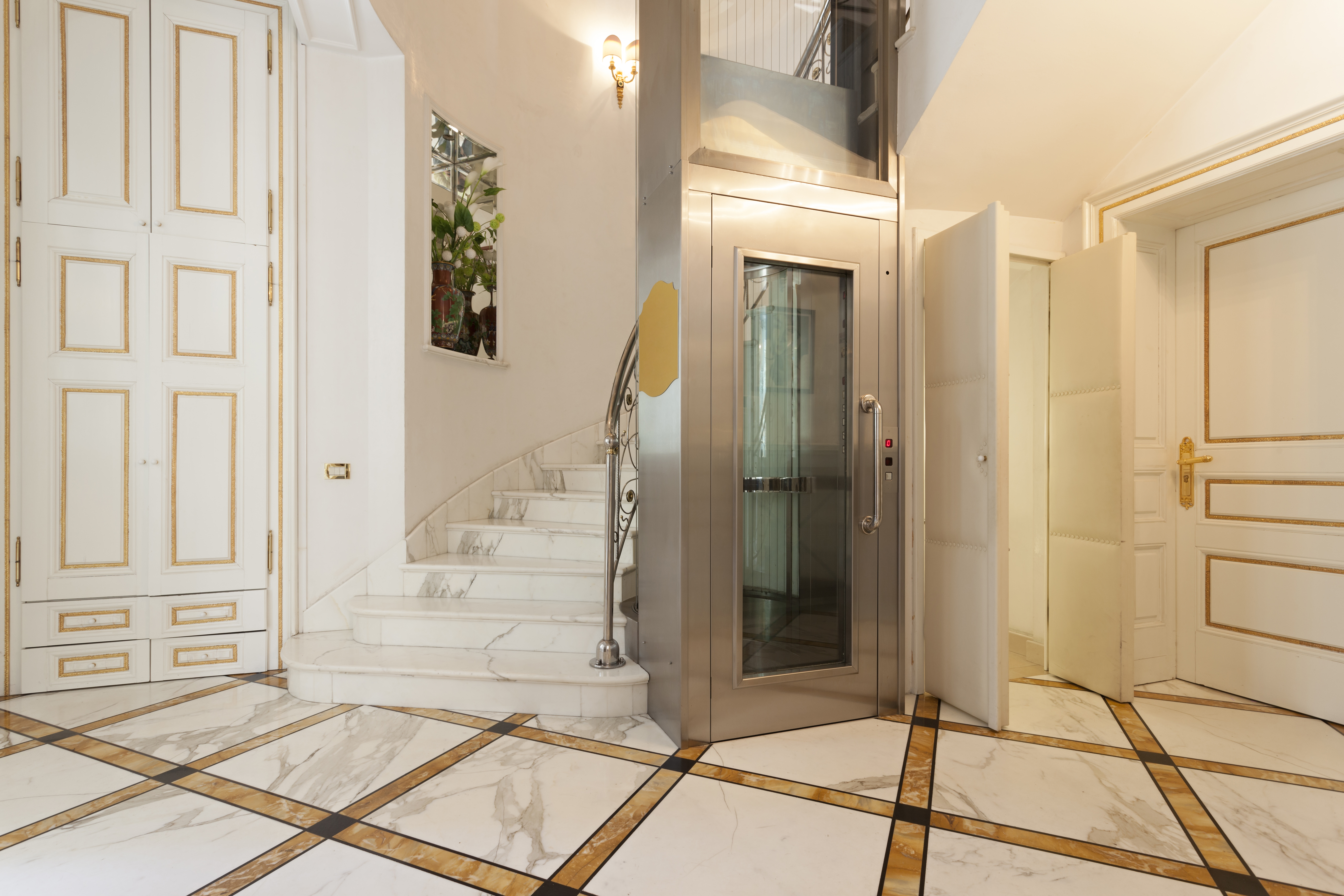Home lifts
Contents |
Introduction
Lifts have made our lives easier in a variety of settings. They allow us to travel to the top of the world’s tallest buildings and to transport goods between the floors of hotels. Without lifts, many people, both with mobility issues and without, would struggle to navigate tall buildings.
While they may be common in skyscrapers, lifts can also be used in the home, and may be chosen by homeowners for a range of reasons.
Considerations
When installing a home lift, it is necessary to consider the stylistic impact it will have on its surroundings. Modern lifts can be stylish and excellently designed, and aesthetic appeal is an important selection criteria for many homeowners who are considering an installation.
Another important consideration is the space that is available. Home lifts are often added to an existing house, so they must be worked into an existing structure and space. This is can be challenging, particularly in relation to lift pits. The advancement in technology has meant that low pit lifts are now possible, requiring less space than previously.
The available space can also have an impact on the way the lift doors function, as some open outwards, requiring extra space, whereas others can slide away which can be a preferable choice in a home with limited space.
It is also vital to consider the reason for the installation of the lift. Some home lifts are installed solely for the use of those with mobility issues, so they may only need space for one passenger at a time. However, other home lifts may need to be designed for multiple passengers.
Types of home lifts
There are a number of different types of home lifts which can be selected for a variety of reasons and applications. These include:
Disabled access lifts
Disabled access lifts are designed to make life easier for those with mobility issues by helping them to move around the home. These could be in the form of a platform lift or step lift and can vary greatly in size and style.
Passenger lifts
Passenger lifts can be particularly useful in a home with multiple storeys, and can also help those with mobility issues. Just like disabled access lifts, home lifts are available in a huge range of sizes and styles and can be incorporated into the existing building.
Reasons for home lifts
There are a number of reasons why any type of home lift may be chosen. These include:
- Providing a more attractive and useable alternative to a traditional stair lift.
- Providing disabled access in a home that would otherwise be inaccessible for those in wheelchairs.
- Providing access to a home that may be in an unusual setting and requires the homeowner to ascend or descend to enter the home.
- Providing a way of moving around the home with ease – this may be particularly useful for those who have reduced mobility, such as the elderly.
- Increasing the value of a property – this may not be the sole reason for the installation of a home lift, but it can often be an important factor that persuades homeowners.
Find out more
Related articles on Designing buildings Wiki
- Considerations When Installing a Residential Lift
- Disabled Access Lifts
- Lifts for Office Buildings
- Lifts for Buildings
- The Importance of Service Lifts
- Lift Standards: EN 81-20 and EN 81-50
- The Science of Lifts.
- Lifts.
- Lifts and Escalators: A Quality Perspective.
- Lifts and Their Special Operating Modes
- Platform Lifts and How They Benefit People
- Stiltz home lift.
- Through-floor lifts.
--Nathan Massey 11:43, 16 Oct 2017 (BST)
Featured articles and news
RTPI leader to become new CIOB Chief Executive Officer
Dr Victoria Hills MRTPI, FICE to take over after Caroline Gumble’s departure.
Social and affordable housing, a long term plan for delivery
The “Delivering a Decade of Renewal for Social and Affordable Housing” strategy sets out future path.
A change to adoptive architecture
Effects of global weather warming on architectural detailing, material choice and human interaction.
The proposed publicly owned and backed subsidiary of Homes England, to facilitate new homes.
How big is the problem and what can we do to mitigate the effects?
Overheating guidance and tools for building designers
A number of cool guides to help with the heat.
The UK's Modern Industrial Strategy: A 10 year plan
Previous consultation criticism, current key elements and general support with some persisting reservations.
Building Safety Regulator reforms
New roles, new staff and a new fast track service pave the way for a single construction regulator.
Architectural Technologist CPDs and Communications
CIAT CPD… and how you can do it!
Cooling centres and cool spaces
Managing extreme heat in cities by directing the public to places for heat stress relief and water sources.
Winter gardens: A brief history and warm variations
Extending the season with glass in different forms and terms.
Restoring Great Yarmouth's Winter Gardens
Transforming one of the least sustainable constructions imaginable.
Construction Skills Mission Board launch sector drive
Newly formed government and industry collaboration set strategy for recruiting an additional 100,000 construction workers a year.
New Architects Code comes into effect in September 2025
ARB Architects Code of Conduct and Practice available with ongoing consultation regarding guidance.
Welsh Skills Body (Medr) launches ambitious plan
The new skills body brings together funding and regulation of tertiary education and research for the devolved nation.
Paul Gandy FCIOB announced as next CIOB President
Former Tilbury Douglas CEO takes helm.
UK Infrastructure: A 10 Year Strategy. In brief with reactions
With the National Infrastructure and Service Transformation Authority (NISTA).
























